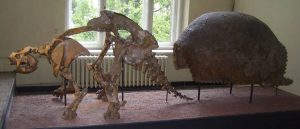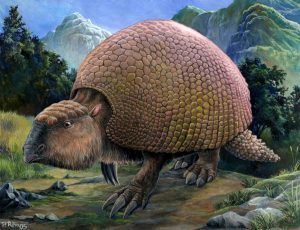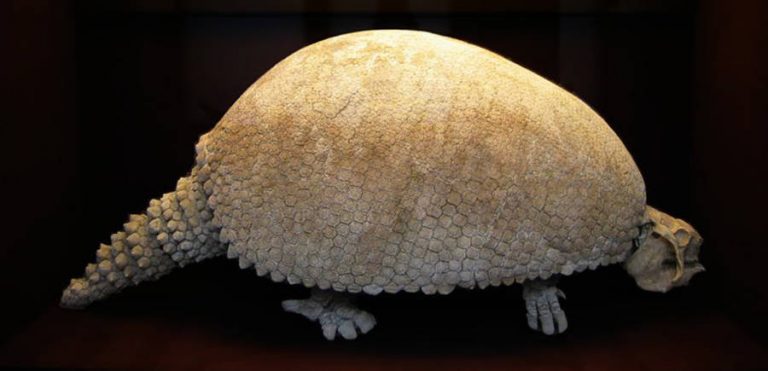In prehistoric times, it seems as though every single animal was bigger than its modern counterpart. Mammoths were taller, hairier, and heavier than elephants. Ancient sloths grew to the size of modern-day elephants. Alligators and crocodiles routinely grew to the length of a city bus. And snakes were so big that they could eat alligators.
One such enormous prehistoric creature that dwarfs its modern counterpart — and a creature that our ancestors came in contact with — was the Glyptodon, a giant armadillo about the size of a Volkswagen Beetle.
Glyptodon reappeared on the scene in 1823, when an Uruguayan naturalist was shocked to unearth what turned out to be an eight-inch-thick, seven-pound femur unlike anything he had seen before.

The discovery of more large bone fragments in the area led experts to hypothesize that they belonged to an enormous ground sloth, but when a strange collection of bony plates turned up, a new theory was put forward: at some point in history, a giant armadillo had walked the earth.
Everyone had a different idea about what the new discovery should be called — and with all the different names being batted around in the scientific literature, many didn’t realize they were all talking about the same creature.

It took English biologist Richard Owen to point out what was happening, and since he resolved the confusion, it was his name that stuck: Glyptodon, meaning “grooved tooth.”
Read more HERE
Ask me anything
Explore related questions





